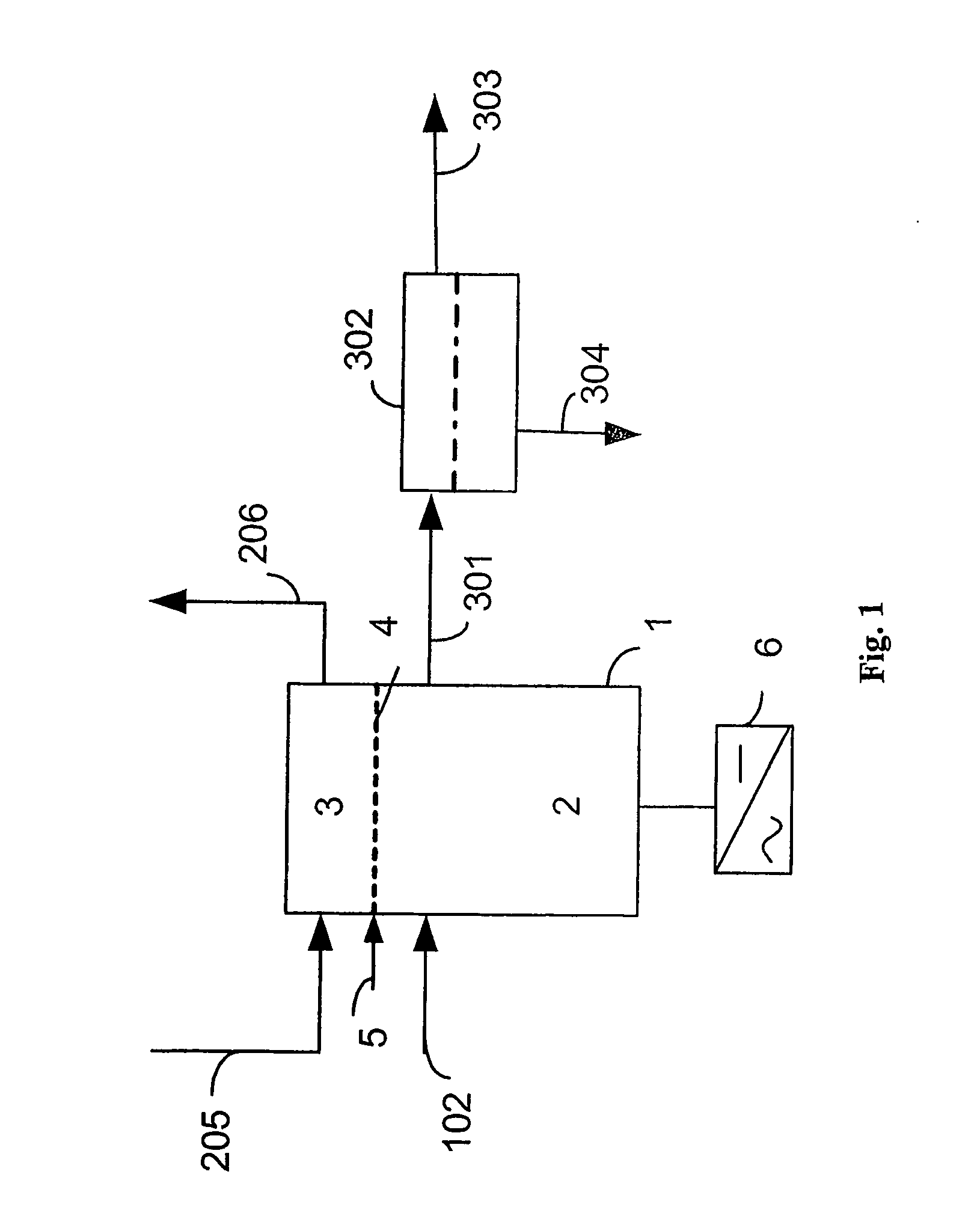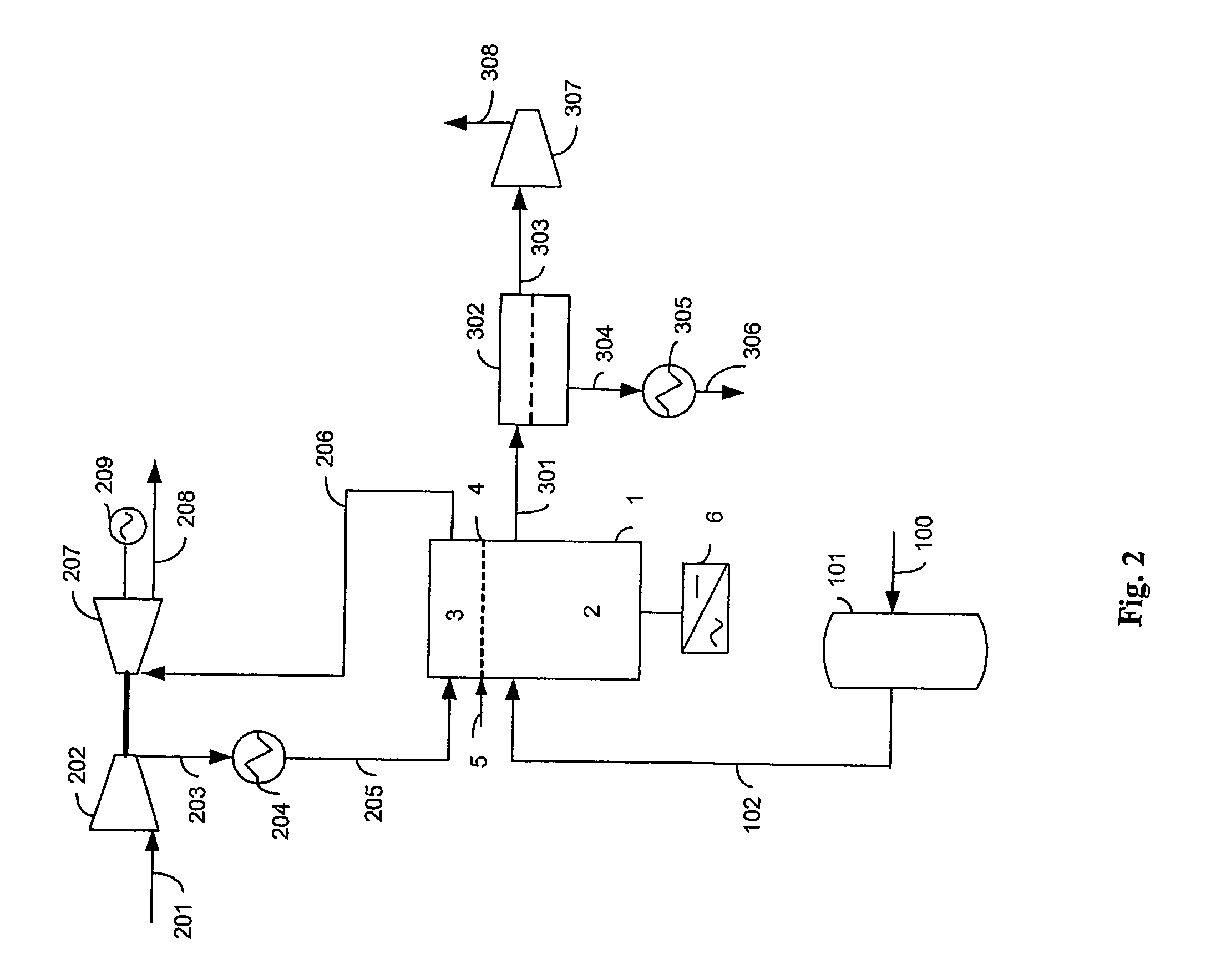Method for exhaust gas treatment in a solid oxide fuel cell power plant
a fuel cell power plant and solid oxide technology, applied in the direction of liquefaction, machine/engine, energy input, etc., can solve the problems of small number of gas turbines available, limited future development safety risks of nuclear power plants, etc., to achieve clean and preferably pressurised co2 stream, simple and preferably cheap, and high electrical efficiency
- Summary
- Abstract
- Description
- Claims
- Application Information
AI Technical Summary
Benefits of technology
Problems solved by technology
Method used
Image
Examples
Embodiment Construction
[0046] Referring now in detail to the figures of the drawings, in which identical parts have identical reference symbols, and first, particularly, to FIG. 1. FIG. 1. shows the main principles of the present invention. The main SOFC stack 1, is divided into an anode section 2 and a cathode section 3 by a sealing system 4. This seal system may be a steam seal. Addition of steam, 5, is needed for this particular seal. In order to simplify the schematic, the anode section comprise of all needed reforming steps, as well as optional internal recycle of part of the anode exhaust to the reformers to provide steam required for the steam reforming, or steam addition to the reformers if internal recycle of fuel is omitted, in addition to the fuel cells anode side. No details of the fuel cells are shown. In the present example the fuel cells are of the tubular (one closed end) solid oxide type. Poison-free fuel containing the element carbon 102, typically natural gas, is fed to the anode side 2...
PUM
 Login to View More
Login to View More Abstract
Description
Claims
Application Information
 Login to View More
Login to View More - R&D
- Intellectual Property
- Life Sciences
- Materials
- Tech Scout
- Unparalleled Data Quality
- Higher Quality Content
- 60% Fewer Hallucinations
Browse by: Latest US Patents, China's latest patents, Technical Efficacy Thesaurus, Application Domain, Technology Topic, Popular Technical Reports.
© 2025 PatSnap. All rights reserved.Legal|Privacy policy|Modern Slavery Act Transparency Statement|Sitemap|About US| Contact US: help@patsnap.com



